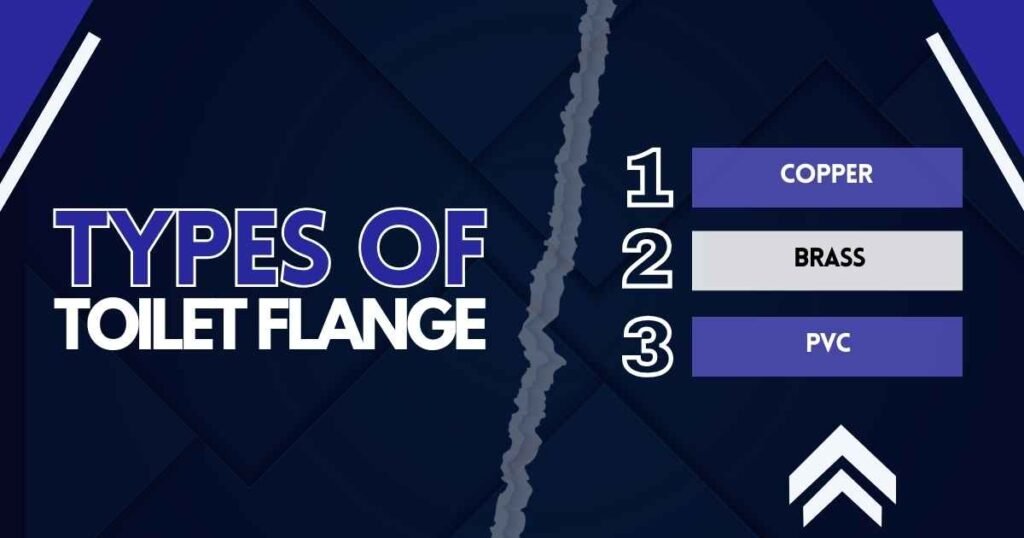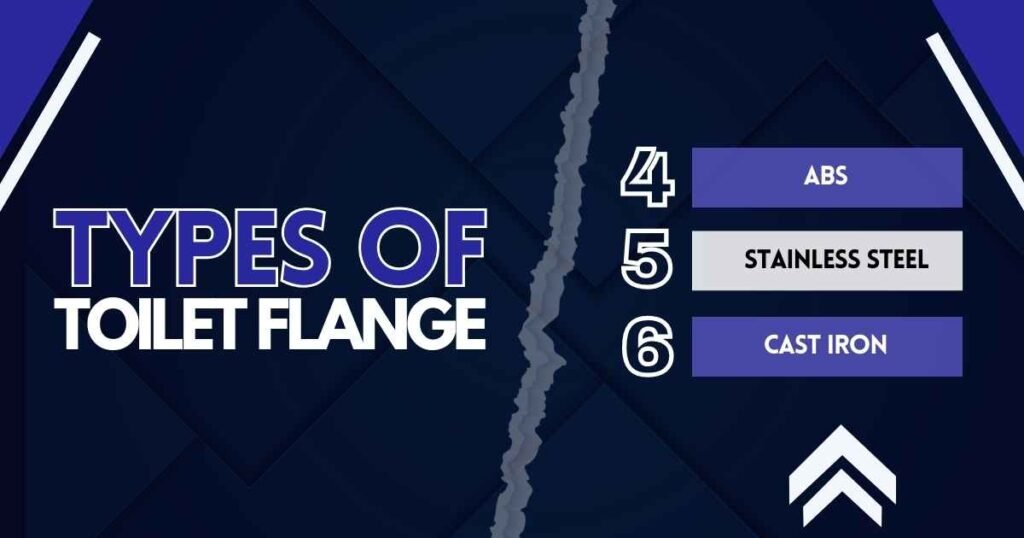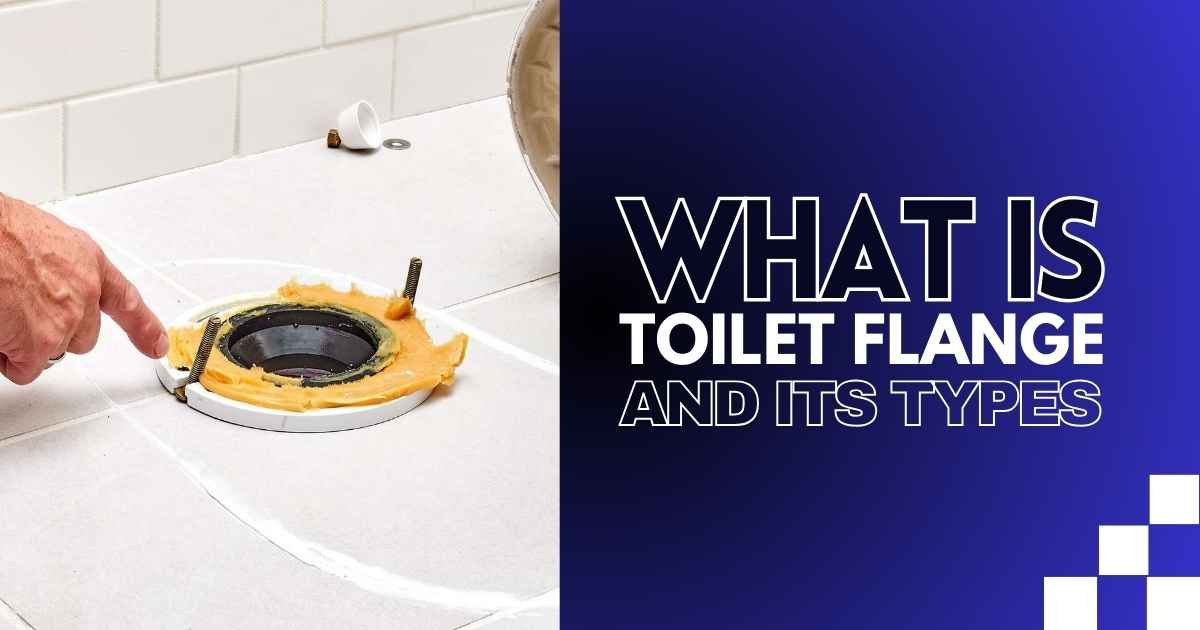You’re in the middle of a bathroom renovation, choosing the perfect tiles, a sleek sink, and a modern toilet. Everything seems to be coming together, but then someone brings up a toilet flange. You stop and wonder—what is that, and why is it important?
The toilet flange, though hidden and often unnoticed, is an important component of your bathroom’s plumbing. It securely connects the toilet to the drainpipe, ensuring everything operates as it should. Without the right flange, even the most stunning bathroom setup could encounter serious issues.
What is a Toilet Flange?
A toilet flange is a small but important part of your toilet’s plumbing system. It’s a round fitting that connects the toilet to the drainpipe in the floor. The flange keeps the toilet securely in place and creates a seal to prevent water and waste from leaking.
Its main job is to:
- Connect the toilet to the drainpipe: It acts as the link between the toilet and the pipe that carries waste to the sewer or septic system.
- Maintain a watertight seal: The flange works with a wax ring or rubber seal to stop water from leaking out onto your bathroom floor.
Without a properly working toilet flange, your toilet may wobble, leak, or cause unpleasant smells. It’s a small part, but it plays a big role in keeping your bathroom clean and functional.
Types of Toilet Flanges
In Las Vegas, choosing the right toilet flange is important due to the dry climate and potential hard water issues. Here’s a breakdown of common flange materials and their benefits:

Copper
Copper flanges are durable and naturally resist rust, which is helpful in Las Vegas where hard water can speed up corrosion. They are also biostatic, meaning they don’t attract bacteria, viruses, or fungi. This makes them a hygienic choice for bathrooms. Copper works well in high-use areas but can be more expensive than other options.
Brass
Brass flanges are also rust-resistant and heat-resistant, which is useful if your home has warm water pipes running near the flange. While brass is strong and long-lasting, it can oxidize over time if exposed to air. In Las Vegas, where dry conditions may limit exposure to humidity, brass can still perform well.
PVC
PVC is the most popular choice in Las Vegas homes because it’s affordable, lightweight, and doesn’t rust. It stands up well to the dry climate and is easy to install. However, PVC can crack if exposed to extreme pressure, so it’s best for standard residential use.

ABS
ABS flanges are like PVC but are thicker and more durable. They perform better in homes where plumbing might see heavy use, such as multi-family units or busy households in Las Vegas. While more expensive, ABS is a great option for long-term durability.
Stainless Steel
Stainless steel flanges provide the tightest seal and are highly resistant to rust and corrosion, even with hard water. In Las Vegas, these are often used for bathrooms requiring extra durability. Usually, the steel is only in the part that holds the wax ring, while the rest of the flange is made of copper, plastic, or another material.
Cast Iron
Cast iron flanges are ideal for homes with cast iron plumbing, which is less common in modern Las Vegas homes. They are durable and can handle heavy use, but they need to be installed carefully to avoid cracking nearby pipes.
Aluminum
Aluminum flanges are lightweight, rust-resistant, and often used in specific parts, like the ring for the wax seal. In Las Vegas, aluminum is a good choice for bathrooms where durability and resistance to corrosion are needed.
Common Toilet Flange Problems
Knowing what a toilet flange is and how it works is important because it can cause major issues in your bathroom if it isn’t working properly.
Here are common signs of a faulty toilet flange:
- A wobbly or loose toilet bowl
- Water leaking near the base of the toilet
- A bad smell coming from the toilet area
If your toilet is backing up, the flange might be clogged. You can try using a long enough auger to unclog it, but if that doesn’t work, it’s time to call a plumber. If you’ve recently installed a new toilet or changed your bathroom flooring, the flange might not be level with the floor. This can be fixed by adding a flange extender or cutting the pipe to adjust its height.
If you notice water pooling, the problem could be a loose wax ring, which is easy to replace. However, if the flange is cracked or broken, you’ll need to install a new one. Hiring a plumber to replace a toilet flange typically costs $145 to $165, but if you’re doing it yourself, materials cost around $7 to $20.
Small Things, Big Impact
Some see a toilet flange as a minor, insignificant part of a bathroom. Yet, when it fails, it can cause leaks, odors, and costly repairs. Its importance lies in how this small detail keeps everything running smoothly. Like in life, small things often have big impacts. Paying attention to them can prevent bigger problems later.
Don’t let small issues turn into big problems! Trust Vegas Plumbing Pros to handle your plumbing needs with care and expertise. If it’s installing the right toilet flange or fixing any plumbing issue, we’ve got you covered. Call us today and keep your home running smoothly!
FAQs
What are the main types of toilet flanges?
Toilet flanges come in various types and sizes. Standard flanges fit most setups, while offset flanges help position toilets near walls or off-center pipes. It’s important to choose the right toilet flange size to ensure a proper fit and avoid plumbing issues.
How do I know if my toilet flange needs to be replaced?
There are a few signs that your toilet flange might need to be replaced. If you notice water pooling around the base of your toilet, it’s a sign of a leak. A wobbly toilet that moves when you sit on it is another common indicator. Unpleasant smells, often caused by sewer gases leaking through a broken seal, are also a warning sign.
Can I install a toilet flange myself?
Installing a toilet flange yourself is possible if you have some plumbing experience, but it’s not always easy. You’ll need the right tools, proper toilet flange dimensions, and materials, as even a small mistake can lead to big problems like leaks or an unstable toilet.
What happens if a toilet flange isn’t installed correctly?
An improperly installed flange can cause several issues. Leaks can damage your bathroom floor over time, and sewer gases may escape, creating unpleasant odors. A poorly installed flange can also make your toilet unstable, leading to further wear and tear on the plumbing. In some cases, long-term leaks can weaken the floor structure, resulting in expensive repairs.



